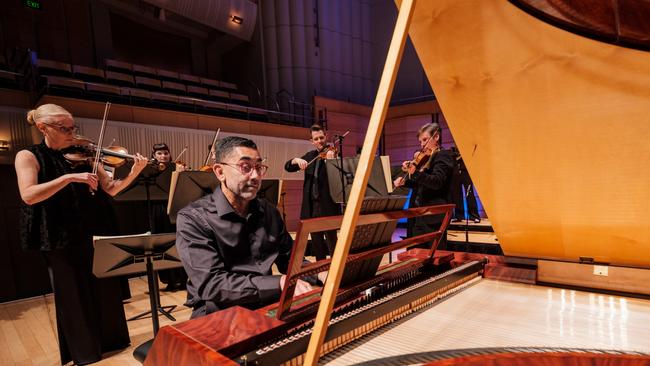Local band draws on past to give Mozart works a fresh coat of paint
Two great Mozart works get a refreshing new approach by local ensemble taking a backward glance.

Local
Don't miss out on the headlines from Local. Followed categories will be added to My News.
- Recorder queen Lacey brings a breath of fresh air
- Another gem from an Aussie foursome going places
- Toot sweet as Mozart’s magical fairytale hits its mark
- Top classical music label goes on stream
An album featuring two of Mozart’s best-loved works, stripped of the rigid performance practices imposed by a Romantic tradition born in the middle of the 19th century and carried on into recordings and recitals of today, has been released by the excellent Australian Romantic & Classical Orchestra (ARCO) through the ABC Classic label.
Led by Rachael Beesley and featuring historical performance expert Neal Peres Da Costa playing a newly commissioned fortepiano, the recording pairs the Piano Concerto No. 23 K488 with Mozart’s final symphony, the ground-breaking Jupiter.
ARCO was formed by Beesley, her co-artistic director Nicole van Bruggen and the late Richard Gill in 2013 with the intention of giving audiences a taste of how 18th and early 19th century masterpieces would have sounded to contemporary audiences. The band plays with gut strings, valveless horns and trumpets and on instruments from the period – or painstakingly replicated by modern craftsmen – and their concert seasons attract a large and faithful following.
This is the second album they have released – their debut in 2022 paired Beethoven’s Symphony No. 7 with Mendelssohn’s youthful String Symphony No. 10, along with Gill conducting Mendelssohn’s Fingal’s Cave a few months before his death in 2018 – and it should open up plenty of ears to a refreshing take on familiar works.
Beesley’s interpretation of the Jupiter draws on research of early recordings and takes an effective theatrical approach. “We aim to bring you on a journey over the entire symphony as if telling a story, cheekily adding ornaments and bringing rhythms alive by allowing the expressive qualities of the music to inform our tempi and rhythmic nuance,” she says.
The approach works, from the dramatic stresses and tensions of the first movement through to the famous fugal finale.
A similar operatic approach is taken by Beesley and Da Costa in the K488 which opens the album. Da Costa has gone back to the piano rolls made in 1904 by the great 19th century Mozart specialist Carl Reinecke for inspiration for his superlative performance. This approach allows him to abandon a slavish approach to the score and add embellishments and tasteful deviations much as early performers, including Mozart himself, famously did.
“Performers since the 19th century have been asking the same question: How did Mozart expect his music to sound?” says Peres Da Costa in the liner notes. “What exactly did he play compared to what he wrote down?”
The result is a revelation if, like most of us, you are used to hearing the work performed on a Steinway with a modern orchestra. Da Costa’s light and smooth technique is evident on the new instrument based on an 1805 Viennese fortepiano by Anton Walther.
But this is also one of Mozart’s dramatic concertos, written at the time he was composing his great opera The Marriage of Figaro, and Da Costa is able to bring surprising power to the table when needed.
The orchestra’s use of gut strings allows the woodwinds to cut through – listen out for the flute and clarinets in the concerto and the oboes in the quieter moments of the Jupiter.
All in all this album is a revelation.
You can get the CD from the ARCO’s website for $25. It’s also available for download there or at Presto Classical from $16.75.


